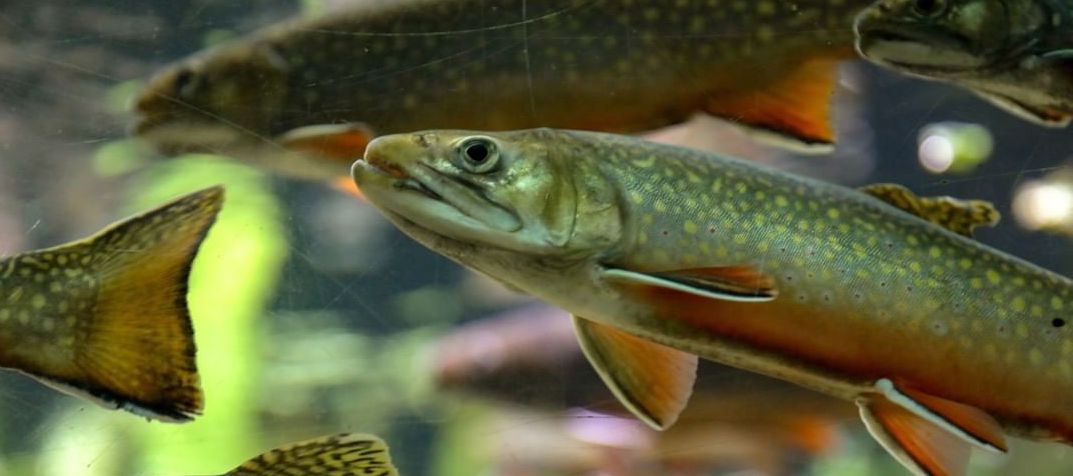What do I feed my fish in an Aquaponics System?
October 07, 2021
As any fellow fish farmer would tell you, the aim of the game is to grow your fish as quickly and efficiently as possible. In other words, you want to maintain your uniformity of growth without degrading the quality of your water. Well, what would you say if we told you that these parameters can be controlled through your feeding regime? That’s right, it’s all about what you feed your fish in your aquaponics system.
Most of the nutrients required by the plants in your system are provided by the fish and feed waste. Therefore, your fish feed has to fulfil the nutritional requirements of both the fish and the plants in an aquaponic system. It’s common practice to utilize a fish waste production strategy where you control or manipulate the amounts of nitrogen, phosphorous and mineral contents of your fish feed. This way, you can accumulate the required amount of nutrients while reducing your need for additional supplementation or dosing.
Types of Fish Feed
It’s important to meet the correct nutritional requirements of your fish to avoid, slower growth rates and increased susceptibility to diseases. Commercial fish food is usually the safer option to go for if you are new to aquaculture and aquaponic farming. However, if you want to go the more organic route there are some alternative feeds. Here at Ichthys, we like to use a combination of both.
Duckweed as an alternative fish feed
We like to call this “Tilapia Sweeties” because our Tilapia do somersaults for this stuff. Duckweed is a fast-growing aquatic plant that makes for the perfect alternative feed for Tilapia and Koi. Although, Catfish don’t seem to have as much of an obsession with this as Tilapia.
Azolla as an alternative fish feed
This aquatic plant can fix atmospheric nitrogen and therefore is high in protein and makes for a great alternative feed. Just make sure you grow it in a separate tank as it can disrupt the water flow.
Black Soldier Fly as an alternative fish feed
Carnivorous fish can be fed a variety of insects and worms such as crickets, insect larvae, flies, tiny crustaceans, cockroaches, fish eggs, all types of worms like blackworms, earthworms, and red wigglers. But there’s a lot of craze around the Black Soldier fly and here’s why.
The larvae of the Black Soldier fly is high in protein and easy to farm yourself which provides a low-cost solution. Also, it provides the fish with certain amino acids that are absent from commercial feed. Once the larvae have reached maturity, you process them by baking them in the oven at 170°C for 1 hour to kill off any harmful pathogens. The baked larvae can then be ground up and added to fish feed.
Vegetables as an alternative fish feed
For our plant-loving fish breeds, we like to feed them some fresh veggies right out of our aquaponic system. Some of these plants include lettuce, watercress, kale and apples.
How much feed should I give my fish in an aquaponic system?
The amount of feed most fish require depends on the water temperature and fish size. In other words, smaller fish have faster metabolic rates and need more feed relative to their body weight than larger fish. Equally importantly, fish are cold-blooded (poikilothermic) which means their body temperatures and metabolic rates vary depending on the temperature of your water. This is why certain fish, like Tilapia, will stop eating if the water temperature moves out of their optimal range. Fish in warmer water require more feed than fish in cooler water.
Commercial Feed
Commercial fish feed is perfectly adequate to have a bunch of happy fish and plants in your system. The feed comes in different sizes to cater for fish that are in different stages of their lifecycle.
Here’s a guideline of some feeding rates for Tilapia under ideal conditions. Please note that every situation and the aquaponic system is different and therefore your feeding regime could look different to the one below.
| Fish Weight (grams) | Feeding Rate (% body weight/day) | Feeds per day | Feed Size |
| 0-1 | 30-15 | 5 | #0 Powder |
| 1-5 | 15-10 | 5 | #1 Crumble |
| 2-25 | 10-5 | 5 | #2 Pellet |
| 25-50 | 5 | 3 | #3 Pellet |
| 50-150 | 5 | 3 | #4 Pellet |
| 150+ | 3 | 3 | #5 Finisher |

Common fish & what to feed them
Trout
Feeding type: Carnivorous
Feed Suggestions: Smaller fish, Insects, Small Crustaceans, Worms, Salmon eggs.
Koi
Feeding Type: Omnivorous
Feed Suggestions: Small Insects, Fruits, Vegetables – lettuce, broccoli, Meats – shrimp, bugs, crayfish and worms.
Goldfish
Feeding Type: Omnivorous
Feed Suggestions: Vegetables, Insects, Worms
Catfish
Feeding Type: Omnivorous
Feed Suggestions: Water plants, Insects, Small fish, Dragonflies
Tilapia
Feeding Type: Omnivorous
Feed Suggestions: Vegetables, Algae, Duckweed
It’s important to note that different fish species require specific diets and you need to ensure that you cater to your fish and their specific needs.
In summary, this is a basic guideline to refer back to when considering what to feed your fish in an aquaponics system. Remember to do your research about the specific species you are farming to ensure you are meeting their needs. However, if you are still unsure about what to feed your fish, make sure to book a consultation with us so we can talk about your feeding regime. We are always ready to offer a helping hand.
Happy feeding!